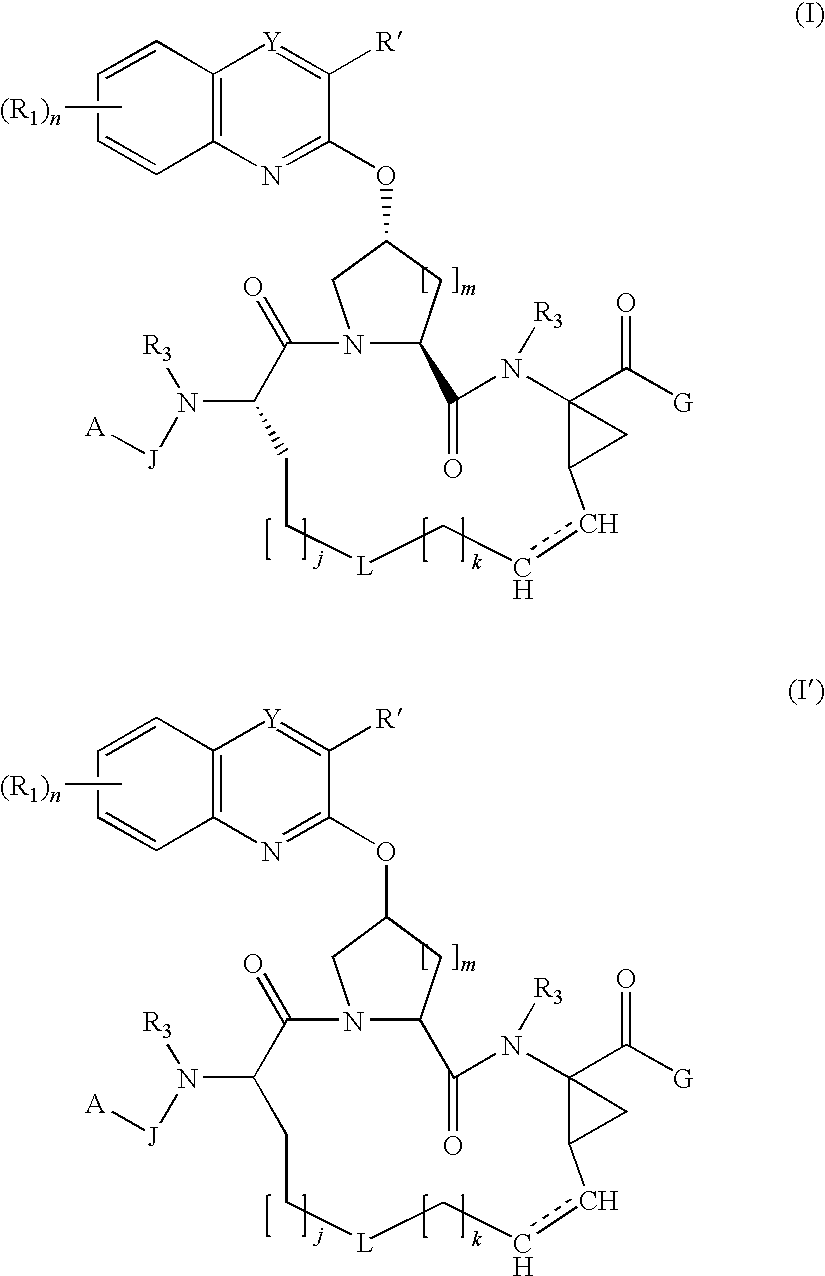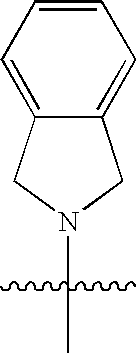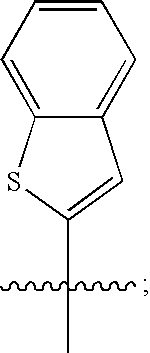Macrocyclic hepatitis C serine protease inhibitors
a serine protease inhibitor and macrocyclic hepatitis c technology, applied in the field of new drugs, can solve the problems of inability to reproduce infectious culture systems and small-animal models of hcv, and the public health problem is increasing
- Summary
- Abstract
- Description
- Claims
- Application Information
AI Technical Summary
Benefits of technology
Problems solved by technology
Method used
Image
Examples
example 1
tert-butyl (2R,6S,13aS,14aR,16aS,Z)-2-(3-(benzo[d]thiazol-2-yl)quinoxalin-2-yloxy)-14a-(cyclopropylsulfonylcarbamoyl)-5,16-dioxo-1,2,3,5,6,7,8,9,10,11,13a,14,14a,15,16,16a-hexadecahydrocyclopropa[e]pyrrolo[1,2-a][1,4]diazacyclopentadecin-6-ylcarbamate
example 1a
(2S,6S,13aS,14aR,16aS,Z)-ethyl 2-(4-bromophenylsulfonyloxy)-6-(tert-butoxycarbonylamino)-5,16-dioxo-1,2,3,5,6,7,8,9,10,11,13a,14,14a,15,16,16a-hexadecahydrocyclopropa[e]pyrrolo[1,2-a][1,4]diazacyclopentadecine-14a-carboxylate
[0318]A solution of (2S,6S,13aS,14aR,16aS,Z)-ethyl 6-(tert-butoxycarbonylamino)-2-hydroxy-5,16-dioxo-1,2,3,5,6,7,8,9,10,11,13a,14,14a,15,16,16a-hexadecahydrocyclopropa[e]pyrrolo[1,2-a][1,4]diazacyclopentadecine-14a-carboxylate and DABCO in toluene was stirred at room temperature (rt). To this solution was added a solution of 4-bromobenzene-1-sulfonyl chloride in toluene. After the addition was complete the reaction mixture was quenched with 10% aqueous sodium carbonate and the mixture stirred for 15 min. Tetrahydrofuran was added and the mixture was washed with 0.5 M HCl, water, and then saturated aqueous sodium chloride. The organic layer was dried over anhydrous magnesium sulfate, filtered, and evaporated under reduced pressure and dried to provide the title c...
example 1b
(2R,6S,13aR,14aR,16aS,Z)-ethyl 6-(tert-butoxycarbonylamino)-2-(3-chloroquinoxalin-2-yloxy)-5,16-dioxo-1,2,3,5,6,7,8,9,10,11,13a,14,14a,15,16,16a-hexadecahydrocyclopropa[e]pyrrolo[1,2-a][1,4]diazacyclopentadecine-14a-carboxylate (1b)
[0319]To a solution of compound 1a (15.0 g, 21.0 mmol) in NMP (55 ml) was added 3-chloroquinoxalin-2-ol (4.56 g, 25.3 mmol) followed by Cs2CO3 (17.1 g, 52.6 mmol). The resulting mixture was heated to 70° C. for 18 hours. The reaction mixture was cooled to room temperature, and then partitioned between ethyl acetate (300 ml) and 1 N HCl (100 ml). The organic layer was separated, washed with brine (100 ml), dried over anhydrous magnesium sulfate, and concentrated under reduced pressure to obtain the crude product as a solid. The solid was purified by column chromatography on silica gel (EtOAc-hexane gradient) to obtain the title compound as a solid (6.2 g, 45% yield); MS(ESI): m / z=656.3 [M+H]
PUM
| Property | Measurement | Unit |
|---|---|---|
| Electrical conductance | aaaaa | aaaaa |
Abstract
Description
Claims
Application Information
 Login to View More
Login to View More - R&D
- Intellectual Property
- Life Sciences
- Materials
- Tech Scout
- Unparalleled Data Quality
- Higher Quality Content
- 60% Fewer Hallucinations
Browse by: Latest US Patents, China's latest patents, Technical Efficacy Thesaurus, Application Domain, Technology Topic, Popular Technical Reports.
© 2025 PatSnap. All rights reserved.Legal|Privacy policy|Modern Slavery Act Transparency Statement|Sitemap|About US| Contact US: help@patsnap.com



